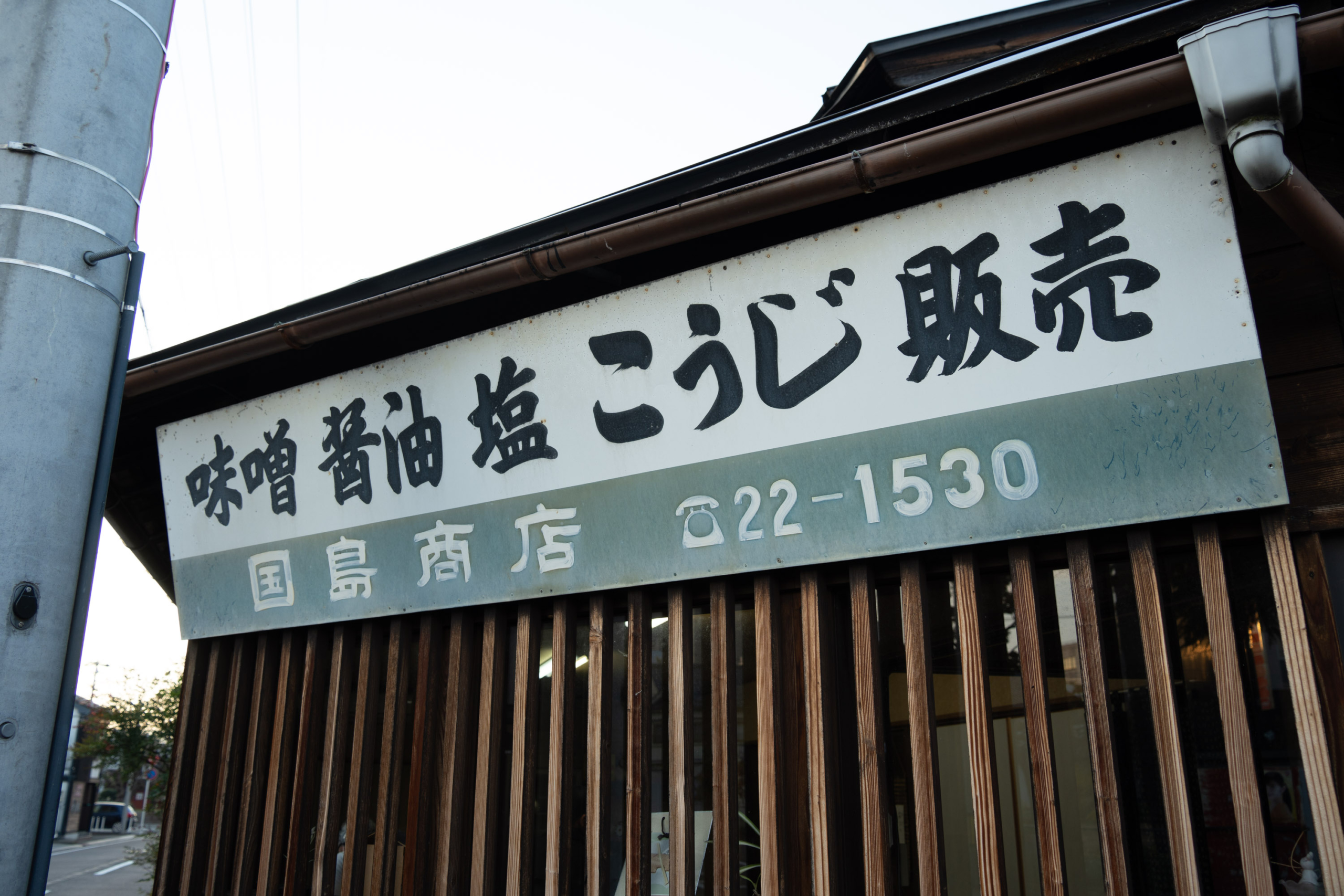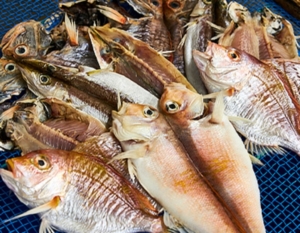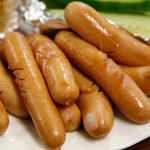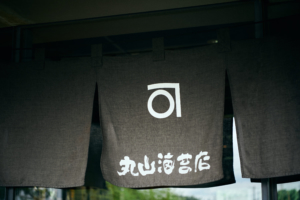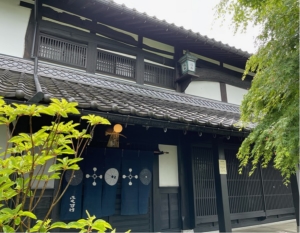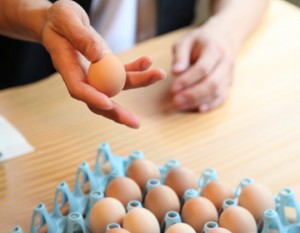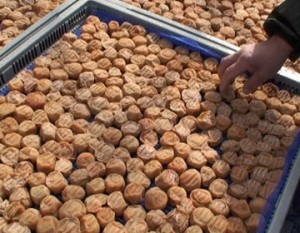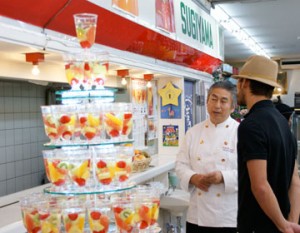In the city of Fukui, the capital of Fukui Prefecture, lies the “Kunishima Seihei Shoten” established in 1520. Today, the company mainly produces koji and other fermented foods such as miso, shio koji, soy sauce koji, and amazake, etc. Having supported local food culture for 500 years, what is the vision of this long-established company in the modern age?
Koji Making from Edo to the Present
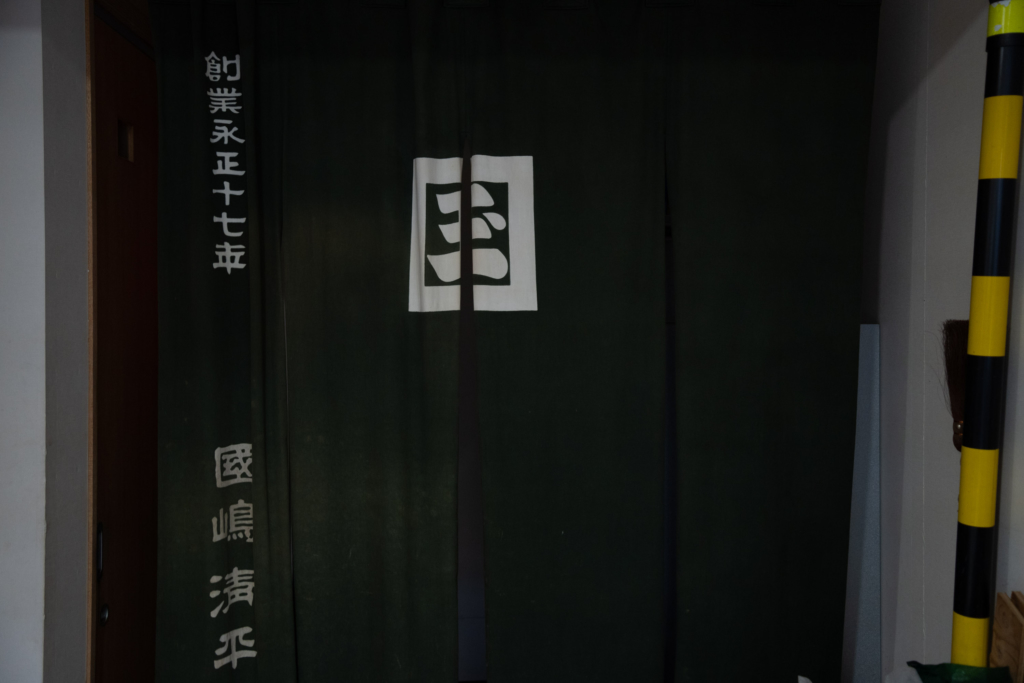
Kunishima Seihei Shoten is located in the Junka district in the center of downtown Fukui. It is a bustling place, with a busy shopping district called Katamachi adjacent to it, and the Ashiba River flowing nearby.
In this day and age, koji shops like this one, which mainly deal in koji, are rare. Although it may not be familiar, a koji shop is a store that makes and sells koji used for making miso and amazake, and until around the early Showa period, there was a koji shop in every neighborhood. In the past, it was common in Japan for households to make fermented foods such as miso by hand, and “chinkoji,” in which farmers brought rice or wheat to a koji shop to have it made into koji, was also popular. However, as time went by, the opportunities for households to use koji decreased, and the number of koji makers also declined. Under such circumstances, Kunishima Seihei Shoten has continued to manufacture miso and other products in addition to koji, and has kept the store’s reputation intact.
Incidentally, koji is made by fermenting steamed grains such as rice, wheat, and beans with koji mold attached. At this store, local rice produced in Fukui Prefecture is steamed, coated with white koji mold, and fermented and aged to make koji. The store makes koji by naturally drying rice in the traditional way, instead of rapidly drying it by machine as is often done with dried koji sold in supermarkets, and it is called “fresh rice koji.
Deep connection with Fukui’s history
The Junka area where Kunishima Seihei Shoten is located is close to the ruins of Fukui Castle, and the area prospered as a castle town ruled by famous historical figures such as Katsuie Shibata, a warlord who built Kitanosho Castle, and Hideyasu Yuki, the first lord of the Fukui domain who built the Fukui Castle. In fact, the restaurant is also related to the Asakura family, which was based in Fukui.
The store’s origins date back to the time when a member of the Kunishima family, who was a vassal of the Asakura clan, moved here as a merchant after the fall of the Asakura clan and started manufacturing miso and soy sauce,” said store owner Kuji Nakabayashi, who is the 18th generation of the Kunishima family. According to Nakabayashi, the store was a large soy sauce warehouse as well as a money changer at the end of the Edo period. The head of the family was a man of such distinction that he was allowed to bear his family name and to carry a sword at his waist, and he must have been a very wealthy merchant, since he was said to have been visited frequently by Fukui clan official Hashimoto Sanai and Confucian scholar Umeda Unhama, among others.
However, the store was destroyed by fire in the Fukui air raid of 1945 and the Fukui earthquake of 1948. Mr. Seihei Kunishima, Nakabayashi’s grandfather and the man behind the current store name, rebuilt the store on a smaller scale and focused on manufacturing and selling koji and miso.
Returning to the hometown and preserving the store’s history
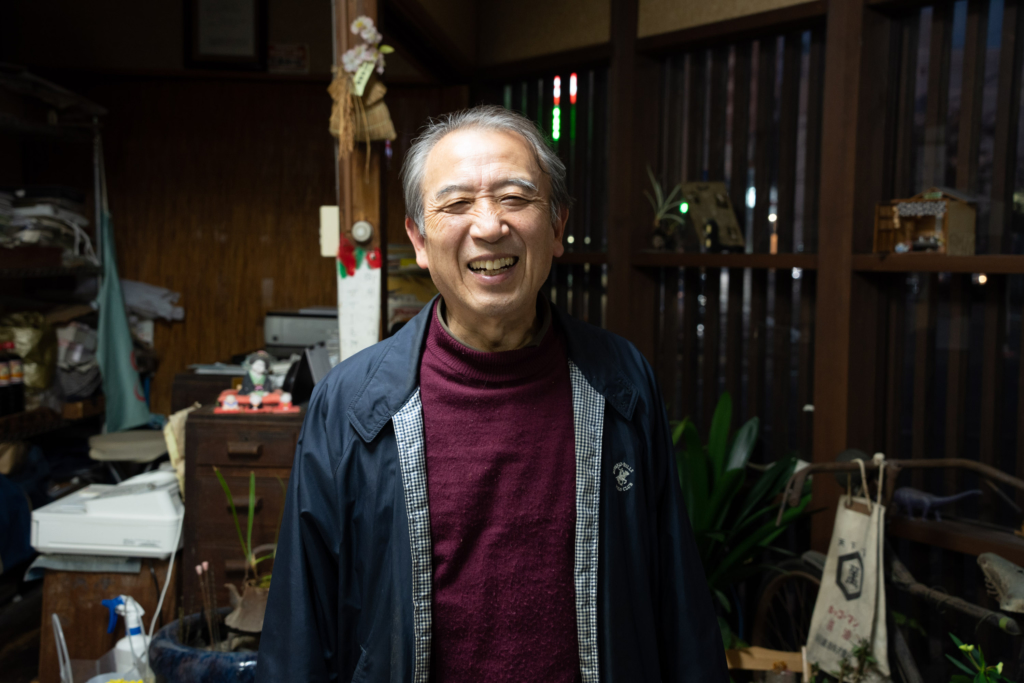
Born in Fukui in 1947, Mr. Nakabayashi left the prefecture for college and joined a major general contractor in Osaka. His father died early, and Mr. Nakabayashi’s mother and aunt ran the family business, but he could not shake off his anxiety about the future of the store due to his advanced age. He was very conflicted about whether he should return to Fukui to take over the store or continue working in Osaka.
He discussed this with his wife, Noriko, and they decided to move to Fukui with their two sons, who were in elementary school at the time. She agreed to help out at the store. Mr. Nakabayashi also commuted to Fukui on weekends and continued to work in Osaka for more than ten years. In 2009, when Mr. Nakabayashi reached retirement age, he made a U-turn to Fukui to take over the business, saying, “We must not let the history of the store die out.
Raw koji made using traditional methods
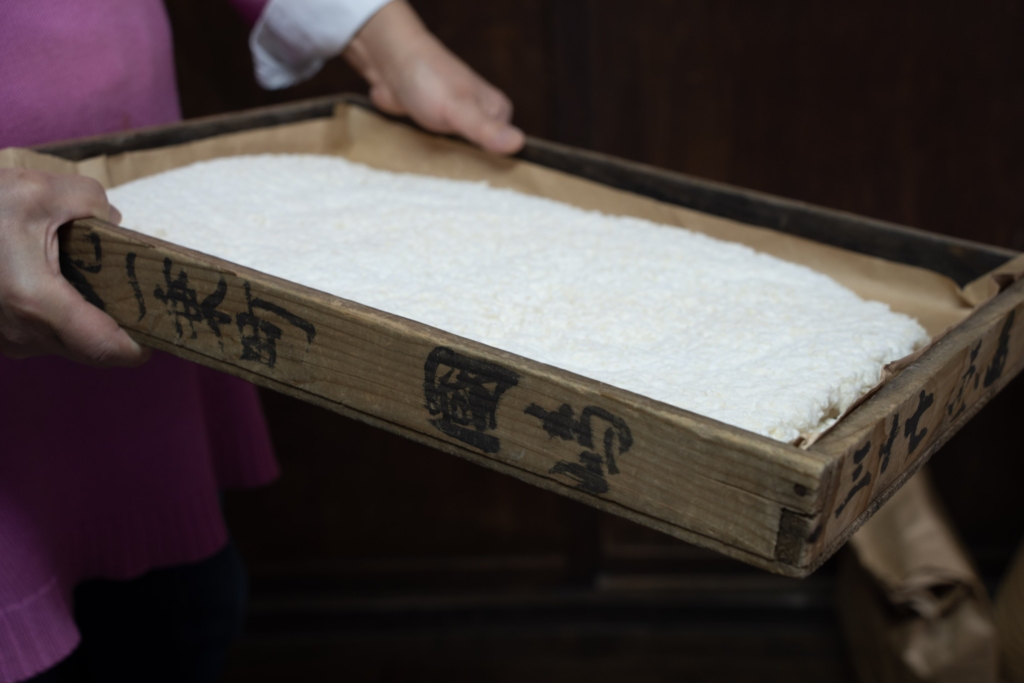
Mr. Nakabayashi has made a complete change from his life as a businessman in Osaka to become the 18th generation in charge of koji production. What saved Mr. Nakabayashi, who was almost an amateur, was the traditional method of making raw koji, which he says he has watched closely since he was a child.
In recent years, “mechanical koji” made by a koji fermentation machine has become the mainstream, and it is rare to find a company like Kunishima Seihei Shoten, which insists on making koji by hand using a process that has been used since the Edo period. Koji made by the traditional method is dried naturally and slowly, without using machines for rapid drying, so it is covered with fluffy mycelium, which is the source of the sweetness. This is why he does not want to stop using this method, even if it is time-consuming and labor-intensive.
Mr. Nakabayashi puts steamed rice into a small, shallow-bottomed wooden box called a koji-buta, attaches koji mold, and spends two full days preparing koji in a specialized, hot and humid room called a koji-muro. Since the temperature and humidity vary slightly depending on where the koji room is placed, the koji lid is moved periodically to adjust the conditions under which the steamed rice becomes koji to be as uniform as possible. The shallow bottom of the koji lid and its small size make it easy to carry for transportation.
The shelf life of the raw koji that Mr. Nakabayashi carefully and painstakingly produces is about 10 days in the cold season. Although it does not last as long as dried koji, Nakabayashi says, “Raw koji has stronger fermentation power and better flavor because the fungi are still alive.
Disseminating the appeal of koji along with its recipes at cooking classes
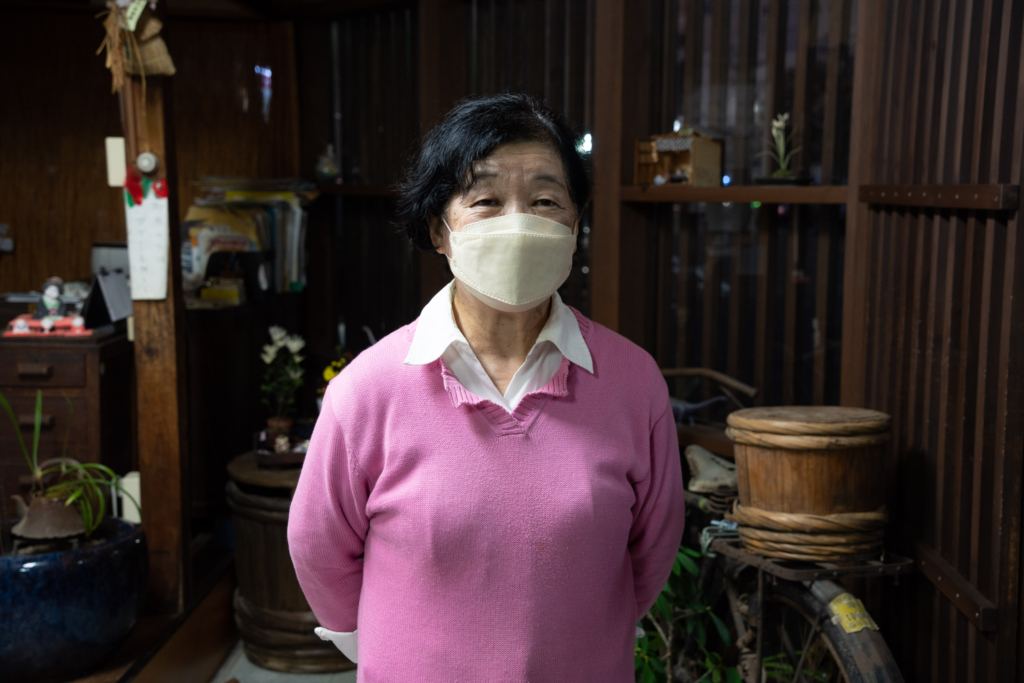
In 2009, Mr. Nakabayashi decided to renovate the second floor of his store into a modern interior, and his wife, Noriko, started a “good food class using koji” to make people in the community more aware of the appeal of koji.
In those classes, he has been offering a variety of dishes from traditional cuisine to unusual sweets using his own koji, including pickles and miso making, kabura-zushi (turnip sushi), pickled radish and herring with koji, and chiffon cake made with miso. Demand for koji increases dramatically especially during the winter season, which is considered the best time to prepare miso. Ahead of the season, Noriko held cooking classes every day to increase the number of koji fans. In addition, to let as many people as possible know the appeal of koji, the cooking classes are open to the public with only the cost of ingredients.
The fermentation boom was a turning point.
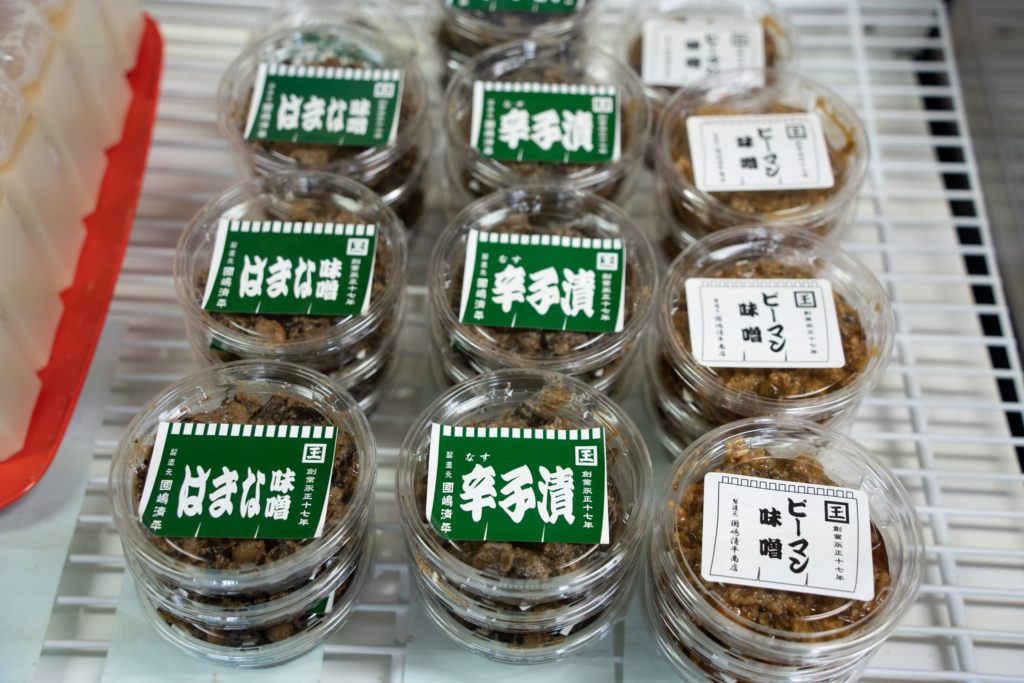
The koji cooking class had been steadily continuing with a few students, but in 2011, “shio koji” became a big boom and attracted a great deal of attention. Since then, the popularity and demand for koji has continued to grow, with “amazake” becoming increasingly popular as a “drinkable infusion” for beauty and health, and the classes are now crowded with students every time they are held.
Mr. and Mrs. Nakabayashi have developed products using koji and amazake, such as “sweet pepper miso” and “pickled eggplant with hot chili peppers. Green pepper miso” is made by adding soy sauce to koji and letting it sit overnight, then adding finely chopped green peppers and green chili peppers to the mixture and simmering it slowly over low heat. Eggplant spicy pickles” is a dish that has been handed down in the Kunishima family for generations, and is arranged by adding amazake (sweet sake) to the pickled eggplant. The spiciness of the pickled eggplant is combined with a mild aftertaste.
Making the most of 500 years of history as a tourism resource
In today’s age of growing interest in beauty and health, interest in koji has also exceeded the expectations of those in charge. The Fukui Prefectural Tourism Federation took notice of this and launched a project called “Fukui Fermented Gelato” in 2022 to make fermented food one of the attractions of tourism in preparation for the Hokuriku Shinkansen extension in the spring of 2024. Mr. Nakabayashi agreed, and with the cooperation of a famous gelato specialty store in the prefecture, developed his own amazake-based gelato. It became a hit product.
This led Mr. Nakabayashi to realize that the traditional food culture of fermentation was being reevaluated and had become one of the tourism resources. He is now thinking of making use of the store’s long history, which dates back more than 500 years, for tourism.
This is a reasonable idea, since the restaurant is tastefully constructed in the traditional style and the floor is covered with precious shakudani-ishi (stone scepter). Eventually, in addition to preserving this historic building, he would like to create a multipurpose space near the restaurant that displays his own historical items. While discovering the value of the shop as a base for passing on the historical value inherited from the time of its founding to the present day and into the future, he is also making daily efforts to lead Fukui’s fermentation culture as a long-established local koji maker.



